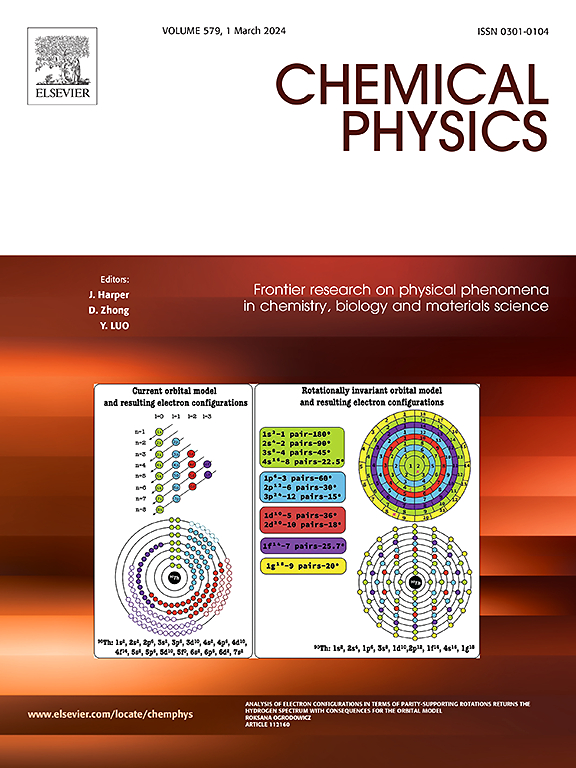采用实验与理论相结合的方法,探讨宜兰油页岩碱氧氧化制羧酸的机理
IF 2
3区 化学
Q4 CHEMISTRY, PHYSICAL
引用次数: 0
摘要
油页岩的碱氧氧化是研究油页岩结构特征和制备羧酸的有效方法。然而,这种方法通常只得到平均结构参数,只考察氧化产物的分布。有关反应途径和机理的信息没有详细讨论。本文采用实验与计算相结合的方法,对宜兰油页岩的碱性氧氧化机理进行了研究。在氧化过程中,CAs的产率可达56.1%。通过表征油页岩中有机碳的降解途径,得出油页岩中有机碳的降解途径。通过分析分子动力学模拟轨迹,跟踪了碳结构中涉及的中间体和元素反应。ReaxFF实验结果表明,该反应为链式反应,包括侧链氧化、芳香碳氧化和脱羧步骤。甲醛和羰基/酚羟基是形成羧基的活性位点。本文章由计算机程序翻译,如有差异,请以英文原文为准。
Exploring the mechanism of alkali‑oxygen oxidation of Yilan oil shale to carboxylic acids using a combined experimental and theoretical method
The alkali‑oxygen oxidation of oil shale is a useful method to study the structural characteristics and produce carboxylic acids (CAs). However, this approach usually only obtains the average structural parameters and just examines oxidation product distribution. The information regarding reaction pathway and mechanism is not discussed in detail. In this study, a combination of experimental and computational methods was applied to investigate the alkaline‑oxygen oxidation mechanism of Yilan oil shale. In the oxidation process, 56.1 wt% yield of CAs can be obtained. By characterizing degradation pathway of organic carbon in oil shale, the degradation pathway was concluded. By analyzing molecular dynamics simulation trajectories, intermediates and elementary reactions involved in carbon structure were tracked. The ReaxFF results showed that the reaction followed a chain-reaction pathway, which included side-chain oxidation, aromatic carbon oxidation, and decarboxylation steps. Formaldehyde and carbonyl/phenolic hydroxyl groups were the active sites for carboxyl group formation.
求助全文
通过发布文献求助,成功后即可免费获取论文全文。
去求助
来源期刊

Chemical Physics
化学-物理:原子、分子和化学物理
CiteScore
4.60
自引率
4.30%
发文量
278
审稿时长
39 days
期刊介绍:
Chemical Physics publishes experimental and theoretical papers on all aspects of chemical physics. In this journal, experiments are related to theory, and in turn theoretical papers are related to present or future experiments. Subjects covered include: spectroscopy and molecular structure, interacting systems, relaxation phenomena, biological systems, materials, fundamental problems in molecular reactivity, molecular quantum theory and statistical mechanics. Computational chemistry studies of routine character are not appropriate for this journal.
 求助内容:
求助内容: 应助结果提醒方式:
应助结果提醒方式:


